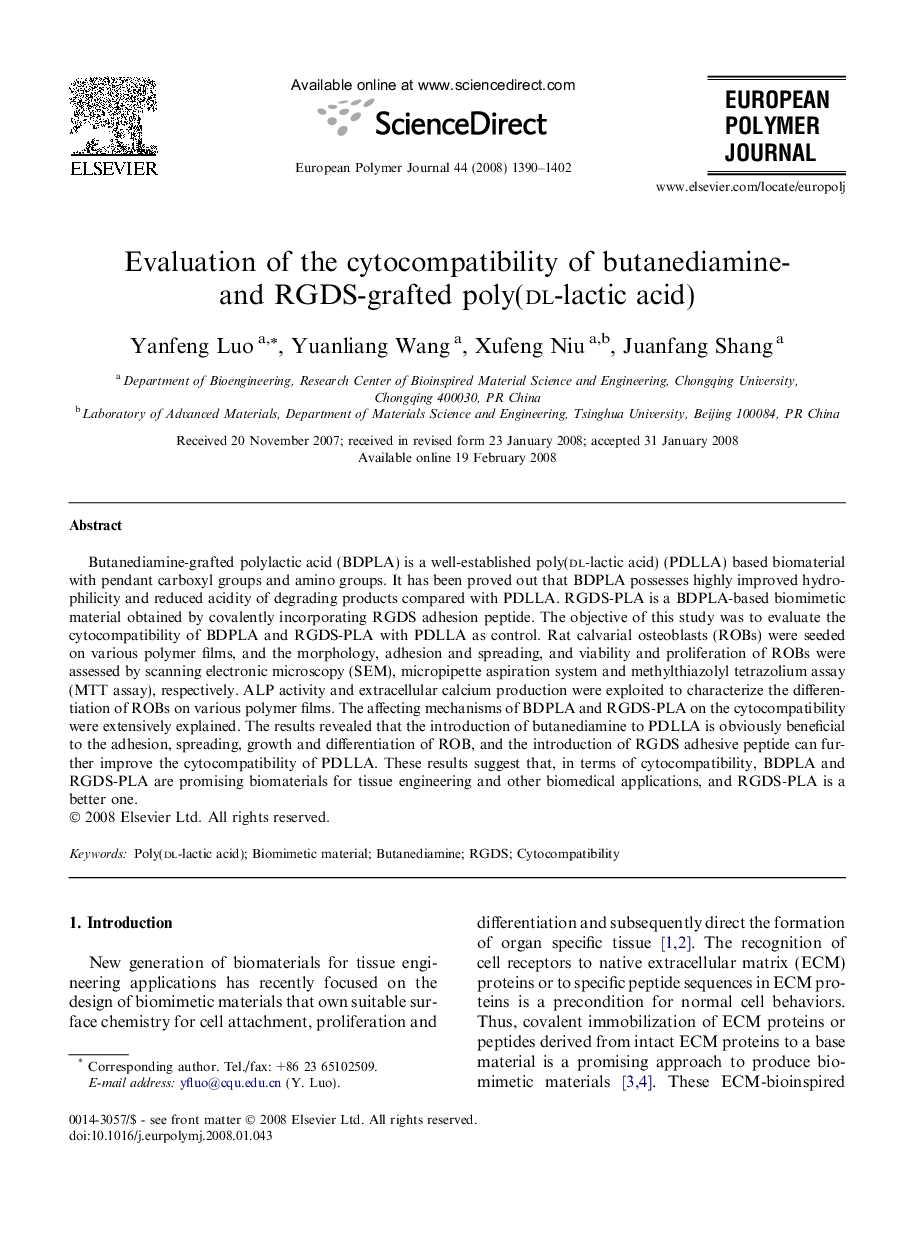| Article ID | Journal | Published Year | Pages | File Type |
|---|---|---|---|---|
| 1403115 | European Polymer Journal | 2008 | 13 Pages |
Abstract
Butanediamine-grafted polylactic acid (BDPLA) is a well-established poly(dl-lactic acid) (PDLLA) based biomaterial with pendant carboxyl groups and amino groups. It has been proved out that BDPLA possesses highly improved hydrophilicity and reduced acidity of degrading products compared with PDLLA. RGDS-PLA is a BDPLA-based biomimetic material obtained by covalently incorporating RGDS adhesion peptide. The objective of this study was to evaluate the cytocompatibility of BDPLA and RGDS-PLA with PDLLA as control. Rat calvarial osteoblasts (ROBs) were seeded on various polymer films, and the morphology, adhesion and spreading, and viability and proliferation of ROBs were assessed by scanning electronic microscopy (SEM), micropipette aspiration system and methylthiazolyl tetrazolium assay (MTT assay), respectively. ALP activity and extracellular calcium production were exploited to characterize the differentiation of ROBs on various polymer films. The affecting mechanisms of BDPLA and RGDS-PLA on the cytocompatibility were extensively explained. The results revealed that the introduction of butanediamine to PDLLA is obviously beneficial to the adhesion, spreading, growth and differentiation of ROB, and the introduction of RGDS adhesive peptide can further improve the cytocompatibility of PDLLA. These results suggest that, in terms of cytocompatibility, BDPLA and RGDS-PLA are promising biomaterials for tissue engineering and other biomedical applications, and RGDS-PLA is a better one.
Related Topics
Physical Sciences and Engineering
Chemistry
Organic Chemistry
Authors
Yanfeng Luo, Yuanliang Wang, Xufeng Niu, Juanfang Shang,
